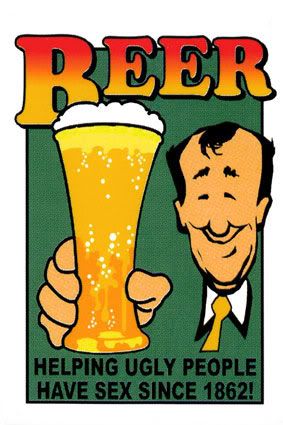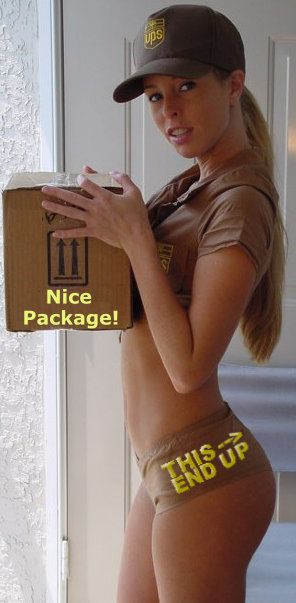YouTube
YouTube is a popular video sharing website where users can upload, view, and share video clips. YouTube was created in mid February 2005 by three former employees of PayPal. The San Bruno-based service uses Adobe Flash technology to display video. The wide variety of site content includes movie and TV clips and music videos, as well as amateur content such as videoblogging and short original videos. Currently staffed by 67 employees,[1] the company was named TIME magazine's "Invention of the Year" for 2006.[2] In October 2006, Google Inc. announced that it had reached a deal to acquire the company for US$1.65 billion in Google's stock. The deal closed on 13 November 2006.[3]
Unregistered users can watch most videos on the site; registered users have the ability to upload an unlimited number of videos. Related videos, determined by the title and tags, appear to the right of the video. In the site's second year, functions were added which provide the ability to post video 'responses' and subscribe to content feeds for a particular user or users.
YouTube was founded by Chad Hurley, Steve Chen, and Jawed Karim, who were all early employees of PayPal.[4] Prior to PayPal, Hurley studied design at Indiana University of Pennsylvania. Chen and Karim studied computer science together at the University of Illinois at Urbana-Champaign.[5] The domain name "YouTube.com" was activated on February 15, 2005,[6] and the website was developed over the following months. The creators offered the public a preview of the site in May 2005, and six months later you tube made its debut.
Like many technology start-ups, YouTube was started as an angel-funded enterprise in a small and inexpensive office or garage. In November of 2005, venture capital firm Sequoia Capital invested an initial $3.5 million;[7] additionally, Roelof Botha, partner of the firm and former CFO of PayPal, joined the YouTube board of directors. In April 2006, Sequoia put an additional $8 million into the company, which had experienced a boom of popularity and growth in just its first few months.[8]
During the summer of 2006, YouTube was one of the fastest-growing websites on the World Wide Web,[9] and was ranked as the 5th most popular website on Alexa, far outpacing even MySpace's growth.[10] According to a July 16, 2006 survey, 100 million clips are viewed daily on YouTube, with an additional 65,000 new videos uploaded per 24 hours. The site has almost 20 million visitors each month, according to Nielsen/NetRatings,[11] where around 44% are female, 56% male, and the 12- to 17-year-old age group is dominant.[12] YouTube's preeminence in the online video market is staggering. According to the website Hitwise.com, YouTube commands up to 64% of the UK online video market.[13]
Google purchases YouTube for $1.65 billion
On October 9, 2006, it was announced that the company would be purchased by Google for US$1.65 billion in stock. The purchase agreement between Google and YouTube came after YouTube presented three agreements with media companies in an attempt to escape the threat of copyright-infringement lawsuits. YouTube will continue to operate independently, and the company's 67 employees and its co-founders will continue working within the company.[14] The deal to acquire YouTube closed on November 13. It is Google's second largest purchase of all time.[15]
Political campaigning
Political candidates for the 2008 U.S. Presidential election have been using YouTube as an outlet for advertising their candidacy. Voters can easily view candidates' statements and make videos supporting or demoting presidential candidates of their own, specifically those for Barack Obama, Joe Biden,Hillary Clinton and Ron Paul.[16] [17] The U.S. media has often commented that YouTube played a significant role in the 2006 defeat of Republican Senator George Allen due to a video clip of him making allegedly racist remarks that was replayed continuously by YouTube viewers during his campaign.[18] [19] [20] [21] [22] Political commentators such as James Kotecki have also begun to join in the YouTube world of politics. Many of them make videos on YouTube critiquing the presidential candidate's YouTube videos or simply using YouTube as a medium to get their opinions heard. Recently, French and Italian politicians, such as Antonio Di Pietro, have also been using the site as part of their campaigns.
Media recognition
In its short time on the web, YouTube has grown quickly and received much attention. Online word-of-mouth has been primarily responsible for YouTube's growth since its inception, and gave the site its first surge of publicity when it hosted the popular Saturday Night Live short Lazy Sunday.[23] However, YouTube's official policy prohibits submission of copyrighted material, and NBC Universal, owners of SNL, soon decided to take action.
In February 2006, NBC asked for the removal of some of its copyrighted content from YouTube, including Lazy Sunday and 2006 Olympics clips.[7][24] The following month, in an attempt to strengthen its policy against copyright infringement, YouTube set a 10-minute maximum limit on video length (except for content submitted via its Director Program[verification needed], which specifically hosts original material by amateur filmmakers). However, the real cutoff is 10:58.[citation needed] This restriction is often circumvented by uploaders, who instead split their original video into smaller segments, each shorter than the 10-minute limit.
Though YouTube had done its part to comply with NBC's demands, the incident made the news, giving YouTube its most prominent publicity yet. As the site continued to grow, NBC began to realize the possibilities, and in June 2006 made an unusual move. The network had reconsidered its actions and was announcing a strategic partnership with YouTube. Under the terms of the partnership, an official NBC channel was set up on YouTube, showcasing promotional clips for the series The Office. YouTube will also promote NBC's videos throughout its site.[25]
CBS, which had previously also asked YouTube to remove several of its clips, followed suit in July 2006. In a statement indicative of how the traditional media industry's perception of YouTube (and similar sites) has changed, Sean McManus, president of CBS News and Sports noted:
“ Our inclination now is, the more exposure we get from clips like that, the better it is for CBS News and the CBS television network, so in retrospect we probably should have embraced the exposure, and embraced the attention it was bringing CBS, instead of being parochial and saying ‘let’s pull it down.’[26] ”
In August of 2006, YouTube announced that, within 18 months, it hopes to offer every music video ever created, while still remaining free of charge. Warner Music Group and EMI have confirmed that they are among the companies in talks to implement this plan.[27] In September Warner Music and YouTube signed a deal, in which YouTube will be allowed to host every music video Warner produced while sharing a portion of the advertisement income. Additionally, user-created videos on YouTube will be allowed to use Warner songs in their soundtracks.[28]
On October 9, 2006, CBS, Universal Music Group, and Sony BMG Music Entertainment announce an agreement to provide content to YouTube.[29]
On January 29, 2007, the co-founder of YouTube, Chad Hurley, announced that the on-line video service will pay its active users, who should also be true copyright owners, a part of the website's revenue gained from advertising. However, at the World Economic Forum, Mr. Hurley did not mention a concrete amount of money that YouTube will pay its contributors.[30]
Press coverage
Time featured a YouTube screen with a foil mirror as its annual Person of the Year citing user created media such as YouTube, and featuring its creators and several content creators. The Wall Street Journal and New York Times have also reviewed content posted on YouTube, and its effects on recruiting and corporate communications in 2006. PC World Magazine has also named YouTube as the 9th of the Top 10 Best Products of 2006.[31] In 2007, both Sports Illustrated and Dime Magazine featured stellar reviews of a basketball highlight video entitled, The Ultimate Pistol Pete Maravich MIX.[32] Because of its acquisition by Google, it is sometimes referred to as "GooTube."[32]
Revenue model
Before being bought by Google, YouTube stated that its business model is advertising-based and was making 15 million dollars per month as such. Some industry commentators have speculated that YouTube's running costs — specifically the bandwidth required — may be as high as 5 to 6 million USD per month,[33] thereby fueling criticisms that the company, like many Internet start-ups, did not have a viably implemented business model. Advertisements were launched on the site beginning in March 2006. In April, YouTube started using Google AdSense. YouTube subsequently stopped using AdSense but has resumed in local regions.
Europe arrival
On June 19, 2007, Eric E. Schmidt was in Paris to launch the new localisation system. The whole interface of the web site is now available with localised versions in several countries (Brazil, France, Ireland, Italy, Japan, The Netherlands, Poland, Spain, United Kingdom). Google aims to competite local video sharing web sites like DailyMotion in France. It also made an agreement with local television stations like M6 and France Télévisions to broadcast legally the video content. Google also planned to localise in Germany in the future.
Wednesday, July 11, 2007
Subscribe to:
Post Comments (Atom)















No comments:
Post a Comment